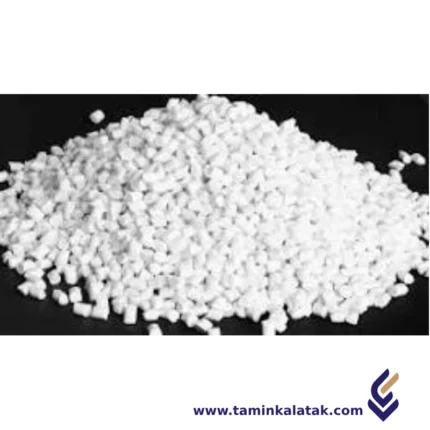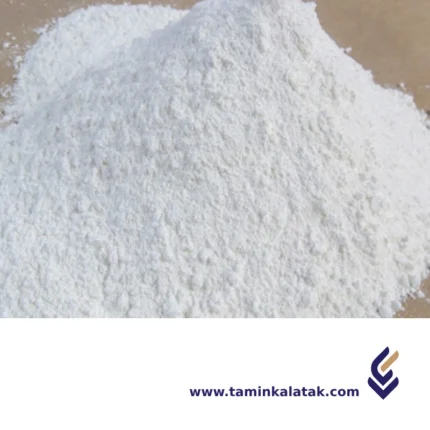Antiblock Masterbatch
Antiblock masterbatch is an additive used in plastic films and sheets to reduce surface adhesion and prevent blocking, where plastic layers stick together after processing. It contains fine inorganic particles such as silica, talc, or calcium carbonate, dispersed in a polymer carrier like PE (polyethylene) or PP (polypropylene).
Structure
The structure of antiblock masterbatch consists of a polymer carrier resin, typically polyethylene (PE) or polypropylene (PP), combined with finely dispersed inorganic antiblocking agents such as silica, talc, or calcium carbonate. These inorganic particles create a micro-rough surface on the plastic film, reducing contact area and minimizing adhesion between layers. The masterbatch is formulated to ensure uniform dispersion of the antiblocking agents, preventing film sticking while maintaining optical properties such as transparency and gloss. In addition to antiblocking agents, the formulation may include processing aids and slip additives to enhance film handling and extrusion performance. The overall composition is designed to provide effective antiblocking performance without compromising the mechanical and optical qualities of the final product.Properties
Antiblock masterbatch has several important properties that enhance the performance of plastic films and sheets. It effectively reduces blocking by introducing micro-roughness on the surface, preventing plastic layers from sticking together. The masterbatch is designed to maintain good optical properties, ensuring minimal impact on transparency and haze, which is especially important for clear films. It also improves the handling and processing of films by reducing friction, often working in combination with slip agents to enhance surface smoothness. The thermal and chemical stability of antiblock masterbatch ensures that it remains effective under high processing temperatures and various environmental conditions. Additionally, it enhances the efficiency of film unwinding, bag opening, and packaging applications without negatively affecting the mechanical strength of the polymer.Applications of Antiblock Masterbatch
- Blown Films – Used in LDPE, LLDPE, and HDPE films to prevent blocking.
- Cast Films – Applied in BOPP and CPP films for packaging and lamination.
- Agricultural Films – Helps prevent sticking in greenhouse and mulch films.
- Shrink and Stretch Wraps – Ensures smooth unwinding and handling.
- Thermoformed Sheets – Reduces adhesion in plastic trays and disposable containers.
- Flexible Packaging – Improves the usability of food and industrial packaging films.
Advantages of Antiblock Masterbatch
- Prevents Film Blocking – Reduces adhesion between plastic layers for easy handling.
- Maintains Transparency – Optimized formulations ensure minimal haze.
- Improves Processing Efficiency – Enhances film unwinding and bag separation.
- Compatible with Various Polymers – Works well with PE, PP, and other film resins.
- Enhances Surface Properties – Reduces friction when combined with slip agents.
- Cost-Effective – Reduces defects and improves production efficiency.
Disadvantages of Antiblock Masterbatch
- Potential Reduction in Clarity – High concentrations may slightly increase haze.
- Can Affect Surface Smoothness – Roughness introduced by antiblock agents may impact certain applications.
- Limited Performance in Thick Films – More effective in thin films than in rigid or thick sheets.
- Possible Interaction with Other Additives – Requires careful formulation to avoid negative effects on slip or anti-static properties.
Processing Aid Masterbatch
Processing Aid Masterbatch (PPA) is an additive used in plastic processing to improve the flowability, surface finish, and processing efficiency of polymers. It helps reduce melt fracture, die buildup, and energy consumption during extrusion, injection molding, and blow molding.
Structure
The structure of Processing Aid Masterbatch consists of three main components: a carrier resin, a processing aid additive, and optional dispersing agents. The carrier resin, typically LDPE, LLDPE, PP, or EVA, acts as a medium to evenly distribute the active processing aid within the polymer. The core functional ingredient, the processing aid additive, is usually a fluoropolymer (PTFE-based), silicone-based material, wax, or metal stearate, which enhances polymer flow, reduces melt fracture, minimizes die buildup, and improves surface finish. To ensure uniform dispersion and stability, additional dispersing agents such as compatibilizers, antioxidants, and lubricants may be included. This structured composition allows the processing aid masterbatch to integrate seamlessly into plastic formulations, optimizing melt flow, reducing processing defects, and enhancing the overall quality of extruded and molded plastic products.Properties
Processing aid masterbatch possesses several key properties that enhance the efficiency and quality of plastic processing. It improves the melt flow of polymers, reducing viscosity and enabling smoother extrusion or molding. One of its most significant characteristics is the reduction of melt fracture, commonly known as the sharkskin effect, which results in a smoother surface finish and improved clarity in films. It also minimizes die buildup, reducing maintenance requirements and increasing production efficiency. Additionally, processing aid masterbatch enhances the dispersion of fillers and pigments, ensuring uniformity in the final product. It helps in reducing energy consumption by lowering processing temperatures and extrusion pressure. Furthermore, it provides improved lubrication, leading to reduced shear stress and wear on processing equipment. These properties make processing aid masterbatch essential in applications such as film extrusion, blow molding, injection molding, and wire and cable coatings, ensuring better quality and higher productivity in plastic manufacturing.Applications of Processing Aid Masterbatch
- Blown Film Extrusion: Improves melt flow, reduces melt fracture, and enhances surface finish.
- Cast Film Extrusion: Enhances gloss, clarity, and mechanical properties.
- Pipe and Profile Extrusion: Reduces die build-up and improves surface quality.
- Injection Molding: Facilitates mold filling, reduces cycle time, and improves part appearance.
- Blow Molding: Ensures uniform thickness and better mold release.
- Wire and Cable Coating: Reduces die drool and improves surface finish.
- Sheet Extrusion: Ensures uniform thickness and enhances mechanical properties.
- Recycling of Plastics: Improves melt flow and reduces defects in recycled materials.
Advantages of Processing Aid Masterbatch
- Improved Processability: Enhances melt flow and reduces processing defects.
- Enhanced Surface Quality: Provides a smooth, glossy, and defect-free surface.
- Reduced Melt Fracture: Prevents sharkskin defects and uneven surfaces.
- Energy Efficiency: Lowers processing temperature and energy consumption.
- Increased Output: Boosts productivity by reducing processing time.
- Cost Reduction: Minimizes waste and extends equipment life.
- Better Dispersion: Ensures uniform distribution of additives in polymers.
- Wide Polymer Compatibility: Suitable for polyolefins, PVC, and other thermoplastics.
Disadvantages of Processing Aid Masterbatch
- Additional Cost: Adds to production expenses.
- Compatibility Issues: May require formulation adjustments for some polymers.
- Impact on Mechanical Properties: Overuse may affect strength and durability.
- Temperature Sensitivity: Some additives degrade at high temperatures.
- Environmental Concerns: Some materials may not be biodegradable.








